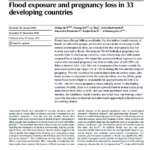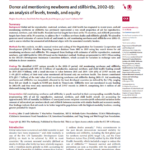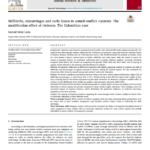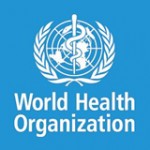More than 5,000 stillbirths occur each day, nearly half of which happen during labor and birth.
Stillbirths have been overlooked as a global public health crisis, in spite of the fact that often highly-preventable solutions overlap with maternal and newborn health interventions. Social taboos and stigma remain a challenge and are culturally variant. The stillbirth rate is a sensitive indicator of quality of care in pregnancy and at birth.
1.9m
number of stillbirths that occurred in 2021
20m
projected stillbirths by 2030 if no progress is made
45
percent of stillbirths that occurred during labor in 2021
All data on this page represents the most recent data available, unless otherwise noted. Please visit our Newborn Numbers page and download the Excel spreadsheet to explore the data further.
High number of preventable stillbirths
An estimated 1.9 million stillbirths occur annually, 89 percent of which occur in low- and lower-middle-income countries and 77 percent of which occur in sub-Saharan Africa and Southern Asia. Over 45% of all stillbirths occur during labor and birth. The most common causes of stillbirth are similar to those that also kill mothers and newborns, such as maternal infections (notably syphilis and malaria), non-communicable diseases, and obstetric complications. Only 7 percent are due to congenital disorders, but some of these are also preventable*.
*All data on this page represents the most recent data available. Please visit our Newborn Numbers page and download the Excel spreadsheet to explore the data further.
Heavy burden of psychosocial and economic cost on families and nations
The burden of stillbirth affects women, families, caregivers, communities, and society. Parents experience various psychological symptoms that often persist long after the death of their baby but could be mitigated by respectful maternity services, including bereavement care. An estimated 4·2 million women are living with depression associated with a previous stillbirth. Stigma and taboo further exacerbate trauma for families, and fatalism impedes stillbirth prevention.
Most stillbirths are preventable with health system improvements
Stillbirths are preventable through high-quality antenatal and intrapartum care within the continuum of care for women and children. Such inputs result in a quadruple return on investment by preventing maternal and newborn deaths and stillbirths, plus improving child development. The stillbirth rate is a sensitive marker of quality and equity of health care.
Opportunities to integrate stillbirths within women’s and children’s health programs must be seized more systematically. Some initiatives, such as the multi-stakeholder Every Newborn Action Plan, within the Every Woman Every Child umbrella, have included stillbirths. Data for tracking stillbirths has increased. However, mentions of stillbirth remain limited in most relevant policies, research, and funding; these are missed opportunities to integrate and act to ensure progress.
More information can be accessed in either the UNIGME 2023 Report – Never Forgotten – The situation of stillbirth around the globe or in The Lancet Ending Preventable Stillbirths Series, published January 2016. The Series presents the state of stillbirths, highlights missed opportunities, and identifies actions for accelerated progress to end preventable stillbirths
Key resources
- UNIGME 2023 Report – Never Forgotten – The situation of stillbirth around the globe
- UNIGME 2020 Report – A Neglected Tragedy: The global burden of stillbirths
- The Lancet Series “Ending Preventable Stillbirths” 2016
- Mamaye – Preventing Stillbirths with Stronger Perinatal Death Review
- The Lancet Ending Preventable Stillbirth Lay Summary (in English, Spanish, French, Italian, Portuguese, Arabic, Hindi and Chinese)
- Ending Preventable Stillbirth Video
- The Lancet Ending Preventable Stillbirths Campaign
- Video of The Lancet Ending Preventable Stillbirths main launch event








